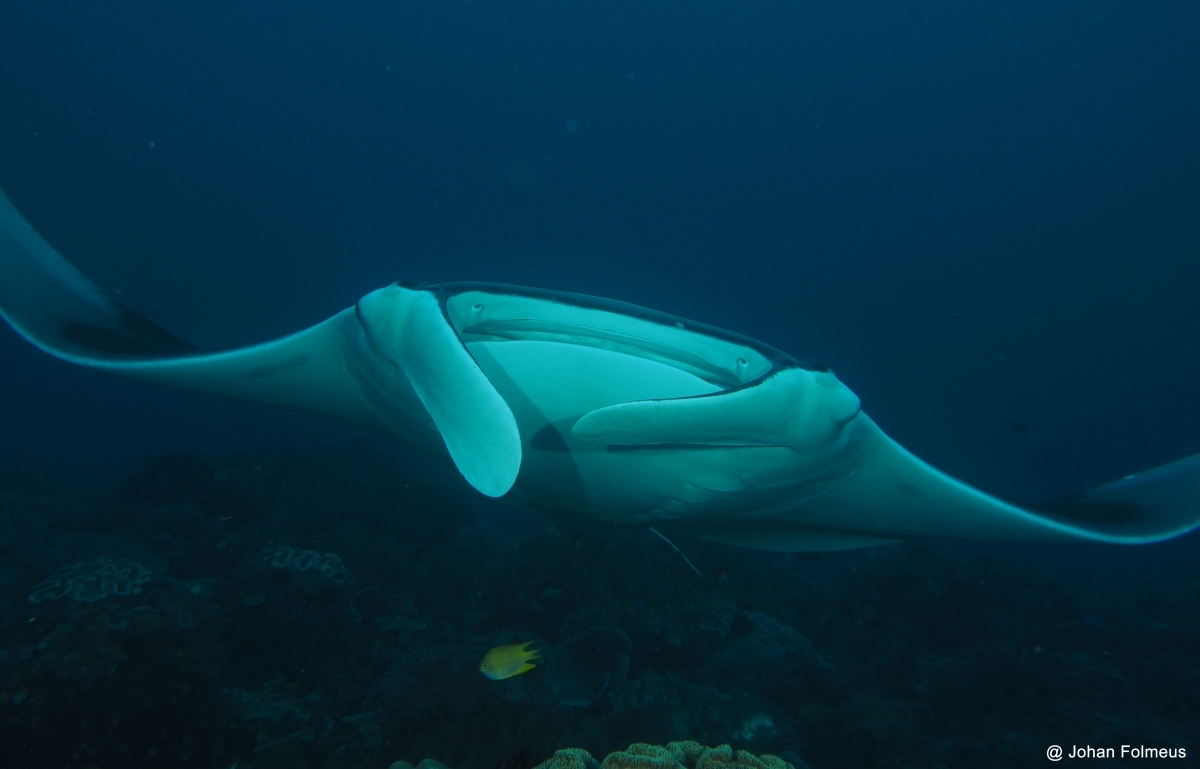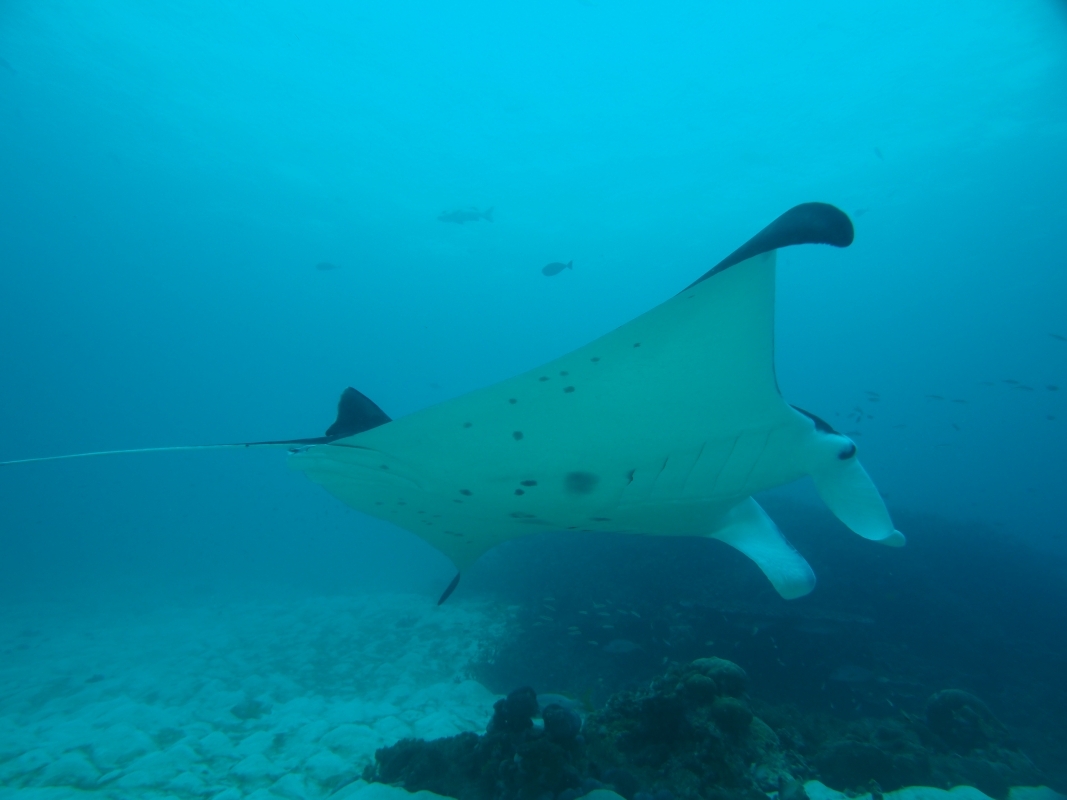Reef Manta Ray
Reef Manta Rays are very popular with scuba divers. They are large, intelligent, curious, friendly and harmless. They can grow up to 5 metres from wing tip to wing tip, but are normally 3 metres across. Large individuals are often mistaken to be Oceanic Manta Rays, which are a different species in the same genus (Mobula). The Reef Manta has more spots on its underside and there is less contrast in the coloration on its back. The Oceanic/Giant Manta Ray (Mobula birostris) has more defined colouration on its back, usually in the shape of a T. The Reef Manta's back is more of a V or Y shape, and less defined.
Until recently, these species were classified in their own genus, but have now been mmoved to the Mobula genus, which has also meant that their scientific classification name has changed as well.
|
Reef Manta Ray
Mobula alfredi
|
|
|---|---|
| Scientific Rank | |
| Kingdom: | Animalia |
| Phylum: | Chordata (Chordates) |
| Class: | Chondrichthyes: Cartilaginous fish |
| Order: | Myliobatiformes (Rays) |
| Family: | Mobulidae (Mobulidae) |
| Genus: | Manta (Manta) |
| Species: | Mobula alfredi |
| Size | |
| Average Size: | 3 metres - 5 metres |
Manta Rays are wonderful creatures, and make a scuba dive very special if you're lucky enough to encounter them. They are harmless to humans, inquisitive, playful and extremely intelligent. They have the largest brain to body size ratio of any fish. If you're ever lucky enough to see a Manta Ray while diving, do not approach or try to follow it. With its huge wing-like pectoral fins, it can swim a lot faster and further than you can, and it will just lead you out into the open. Then it will most likely turn around and visit your dive buddy or group. Divers should just remain at a safe depth and together. The ray will often come back to say hello again.
If some experts notice that one or more of the images on this page are of Oceanic Manta Rays, please contact us or comment. Our website is constantly being updated.


